Why is There Oil in My Intake Manifold (or Throttle Body)?
Since 1961, vehicles sold in the US include a positive crankcase ventilation (PCV) system, developed to help reduce engine emissions. PCV systems have grown complex in modern engines to reduce oil blowby and meet stricter regulations.
However, malfunctioning PCVs can direct engine oil into the intake, causing major issues. This article explains what causes oil to get into the intake air piping, throttle body, and intake manifold and how to stop it from happening.

Related: Why is There Oil in My Air Filter?
How the PCV System Works
The major components of the rotating machinery of your car’s engine are housed inside the crankcase and associated enclosed camshaft areas. These areas are interconnected and sealed from the outdoors.
When the engine is running, extremely high pressures developed in the combustion chambers will force combustion gases past the piston rings and into the crankcase. This is called blowby.
Blowby is inevitable and normal. In a new or low mileage car, such leakage is relatively small. As a car ages, wear to the piston rings will cause the rate of this leakage to increase.
If the crankcase were not in some way vented, blowby would rapidly increase the pressure there. Before too long this would result in oil leakage through the various seals and gaskets of the engine.
The vapors produced in this process contain heated air and water (byproducts of combustion), unburned fuel vapors, and a small amount of microscopically fine oil droplets suspended in the air/fuel mix.
The PCV system piping vents these vapors to two places, the air inlet tubing between the air filter and throttle body and the intake manifold between the throttle body and the intake valves.
Both inlet locations on the engine will receive the blowby vapors. But the port in the air inlet pipe upstream of the throttle body also enables air to flow back to the crankcase whenever engine vacuum (negative pressure) in the intake manifold occurs.
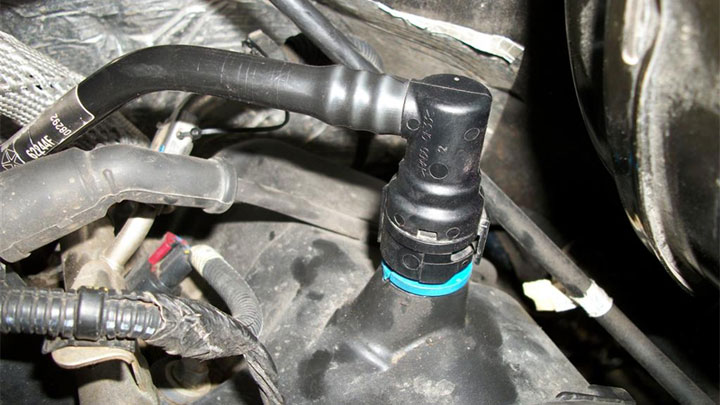
The PCV valve moderates flow in both directions and regulates blowby flow rate to minimize its effect on the fuel/air mixture to the cylinders and the combustion process.
On some automobiles, the PCV system piping leads to a port in the air filter instead of one in the inlet tubing. For this type of system oil in your air filter could also result from PCV problems.
Aside from the PCV connections into the intake of the engine, there are no other sources for oil to inadvertently enter the intake system
Causes of Oil in the Throttle Body and/or Intake Manifold
Several system problems can lead to oil flow through the PCV system piping and into either the throttle body or the intake manifold. Keep in mind that the PCV system plumbing goes into both these areas.
In these situations, oil will be evident either in the air intake tubing upstream of the throttle body, on the throttle body valve and surrounding housing or in the intake manifold. An inspection that reveals oil in these areas is a clear indication of PCV system problems.
Read Also: 4 Causes of Oil In Your Coolant Overflow Tank
#1 – PCV Valve Problems
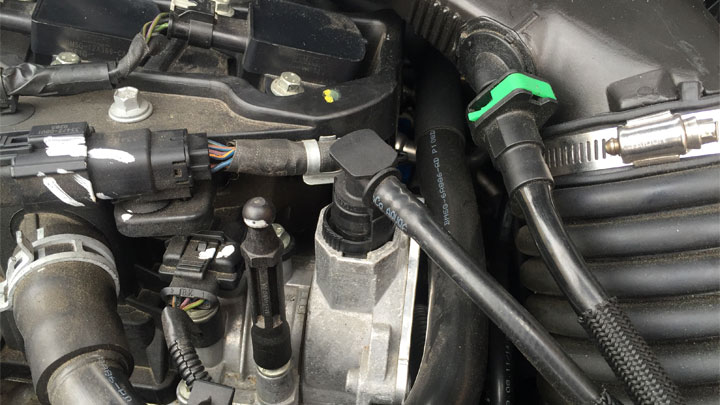
When there’s a problem with your PCV valve, excessive system pressures that could force engine oil through the system piping to either the air inlet tubing, then to the throttle body and/or to the intake manifold. If this problem is excessive, smoke from your car’s exhaust will be evident.
Also a failed PCV valve may throw a code to the OBD 2 System on your car. Codes such as P053A, P053C, P053E, P0171, or P0174 may indicate PCV valve problems. These can be checked either with a code reader tool, by a sales specialist at your auto parts store, or by your favorite mechanic.
#2 – PCV System Problems
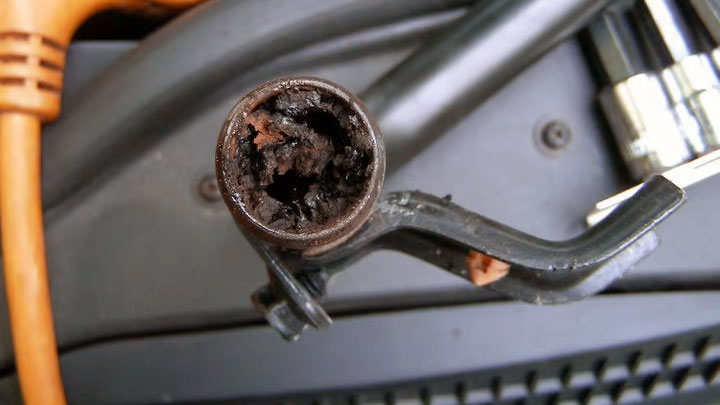
Should any of the system piping become blocked by sludge or pinched closed due to a routing problem, the system may become pressurized forcing oil to the air inlet tubing or to the intake manifold as discussed above.
Removal and clearing the blocked piping can be done if this problem is suspected.
See Also: Intake Manifold Leak Symptoms
#3 – Aging Engine Problems
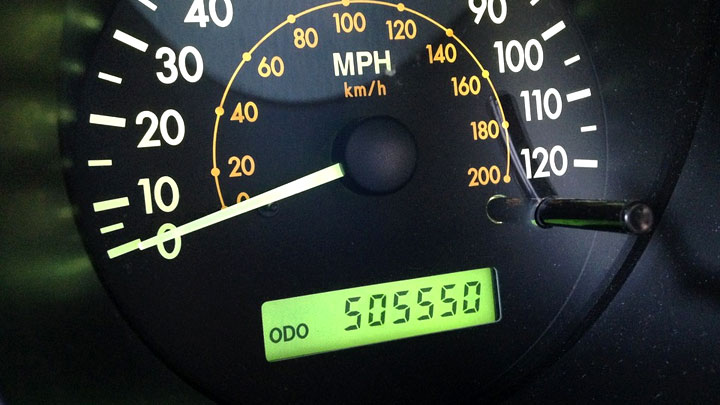
Aging engines (over 150,000 miles) can be expected to display symptoms of excessive blowby. These can include rough idle, rough running, and smoky exhaust.
The least of these problems will be oil from the system getting into the throttle body and intake manifold. In this situation, corrective action can only be accomplished by a costly engine rebuild.
Read Also: P2004 and P2006 (Intake Manifold Runner Issues)
How Serious is this Problem?
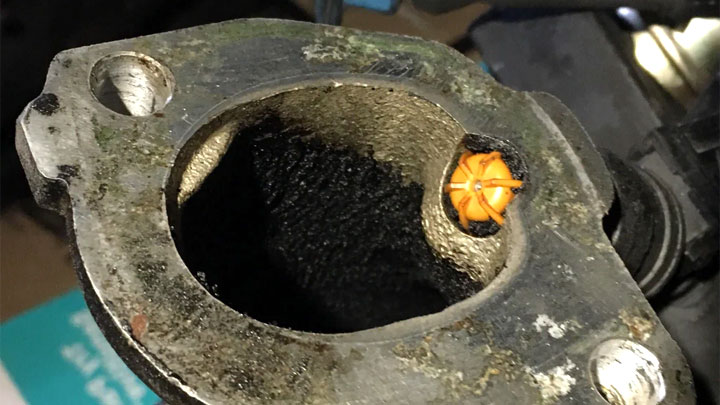
In general, this problem will not cause your engine to cease running. However, the passage of excessive oil to the combustion chambers can cause engine misfires, fouled spark plugs, excessive carbon deposits on the valves, and a loss of engine power.
These deficiencies will also result in decreased engine efficiency leading to an increase in fuel usage.
How to Prevent Oil from Entering the Inlet Air System
The following practices will help keep your PCV system clean and functioning normally. A properly functioning PCV system is the best bet to keep oil out of the air inlet, throttle body, and intake manifold. For best PCV system life:
- Follow your car’s manufacturer’s recommendations regarding engine oil type and frequency of oil and filter changes.
- Use a high quality brand of oil. A 100% synthetic oil is preferred for maximum length of life for all engine components.
- Follow your car’s manufacturer’s recommendations regarding the replacement of the air filter.
Read Also: 10 Cheapest Places to Buy Motor Oil
- DIY Car Repair Tools – Floor Jack and Jack Stands - Dec 12, 2023
- DIY Car Repair Tools – Socket (Ratchet) Wrench - Nov 9, 2023
- DIY Car Repair Tools – Torque Wrench - Apr 20, 2023

I have a 2009 Nissan cube only has 46k miles on it and I keep getting a rather large amount of oil in my air filter box through my throttle body,changed Pcv valve twice ,car runs perfect,help please
Have you ever done a compression or leak down test on that engine? I wonder if you have excessive blow by.